FOSS4G 2017 Trip Report
While the Cesium team has been going to FOSS4G for years, this was my first one, and I had a fabulous time! I had no idea we’d be so busy, talking to so many people who had heard about and wanted to use Cesium, or who were already using and loving it. It was great to meet our users in person, to see what they’ve built and learn about their work. With over 1100 attendees, this was the biggest FOSS4G to date.
Pre-Conference
We started the week off with a workshop taught by Rachel Hwang. She gave an introduction to Cesium to a packed room, with a hands-on tour of Cesium’s most popular features.

Introduction to Cesium workshop.

Introduction to Cesium workshop. Image courtesy of Rob Emanuele.
At the co-located JS.Geo, Matt Amato’s explanation of why 2.5D is not 3D shaped the rest of the day’s discussions, as subsequent speakers clarified whether they were talking about true 3D or 2.5D. A number of attendees approached me at the conference to say how much they learned from Matt’s talk.

Matt speaking at JS.Geo.
The B2B event was a chance for representatives of geospatial businesses to mingle. There were a number of lightning talks by various companies, several of which emphasized their use of Cesium. This evening for me represented a major theme I saw throughout the conference: business and open source aren’t just compatible, they’re a natural fit, offering scalability, flexibility, and innovation. Everywhere I saw people making open source sustainable through reasonable business models.
Sessions
We had some really fantastic talks from Cesium community members. Justin Martinez of DRCOG (pronounced “Dr. Cog”) showed how they built Scenario Manager to help developers and regional planners try out a variety of scenarios, including adjusting parking regulations or units per building to create more vibrant urban centers.
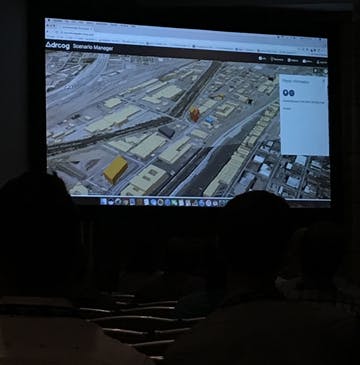
Justin P. Martinez speaking about DRCOG’s work.
Matt Lammers showed off his NASA Storm Viewer and sparked a long-lasting discussion of volume rendering in Cesium.

Matt Lammers showing Storm Viewer.
Planet talked about the massive amounts of data they gather with their flocks of satellites, and how they visualize it with Cesium. They weren’t alone: another major theme of the conference was data, with everyone gathering data at unprecedented levels and grappling with what to do with it.
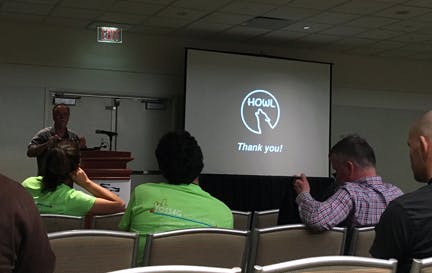
Ricardo Morin showing his work.
Ricardo Morin spoke about developing HOWL, with practical advice on working with Cesium. Tamar Cohen showed how her group at NASA is simulating a Mars mission by sending astronaut hikers across lava flows on Earth and how Cesium has made their work easier.

Tamar Cohen speaking about NASA’s work.
Beyond these talks that spent significant time talking about Cesium, there were many others that mentioned or showed what they’ve done in Cesium as well.
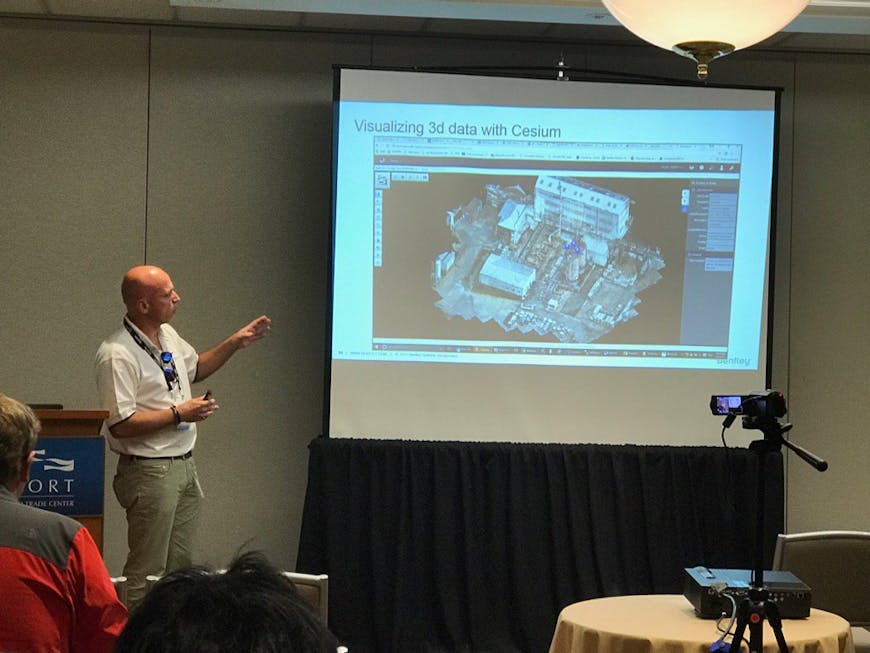
Bentley’s talk on their use of Cesium.
Bentley shared their experience working with Cesium and their perspective on open source. They explained that today’s problems are so complex that no one person can own all the data or answers. In response, they’re shifting their business model and bringing in open source. Their use of open source has given them a competitive advantage because it’s often a good fit for their users’ ecosystem, and sometimes even a selling point. And they reported that the use of open source software is now so widespread, that to not use it would be difficult.
From the core Cesium team, Sean Lilley spoke to a crowded room about 3D Tiles, Matt Amato talked about Google Earth Enterprise, and Hannah Pinkos gave a compelling argument for why we need 3D. All of the slides will be available on our presentations page.
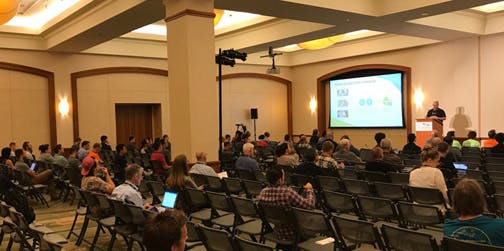
Matt Amato.
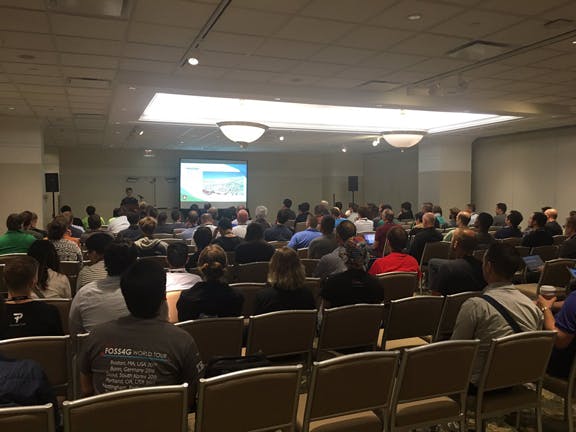
Sean Lilley.
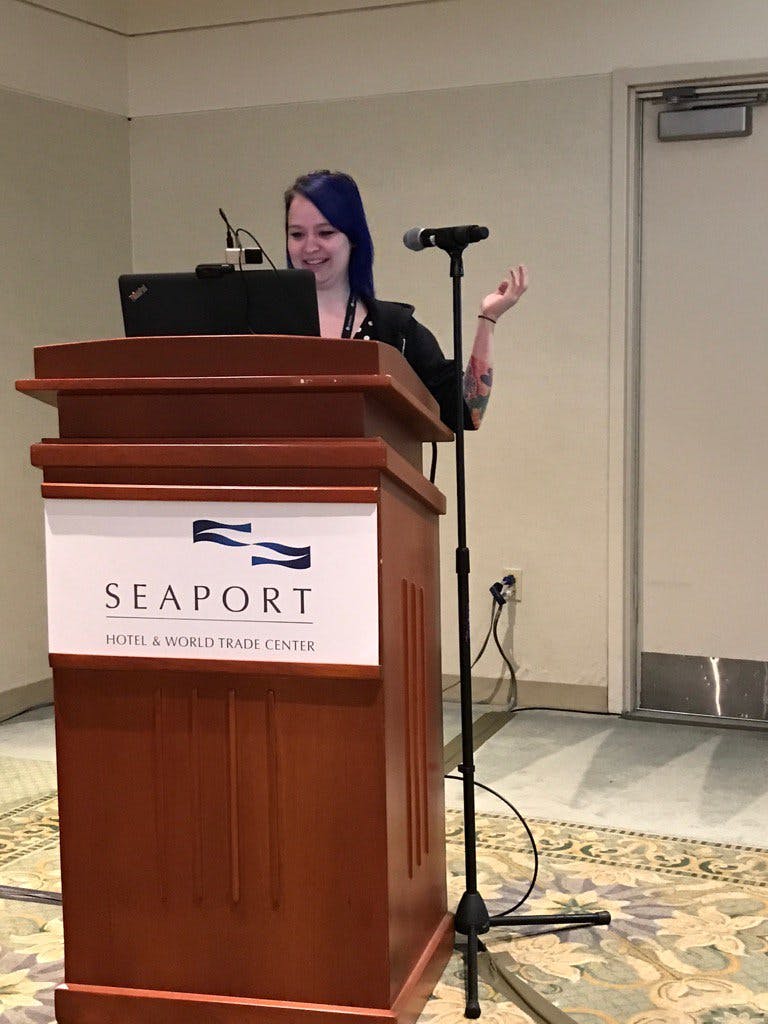
Hannah Pinkos.
The majority of talks I attended were of the “this is what I did” variety: developers presented the problems in their area, the app or technique they developed to solve the problem, and went over a few lessons learned. We hope you’ll give more talks in the future, not just at FOSS4G, but at industry-specific conferences in your field.
Booth
The booth was busy nonstop throughout the conference. The new Cesium Arcade Game, featuring a drone racing through a downtown Philly constructed with Bentley’s ContextCapture, was a wild success, with lots of new high scores (and some new low scores). During breaks we hosted a number of demos from members of the community.
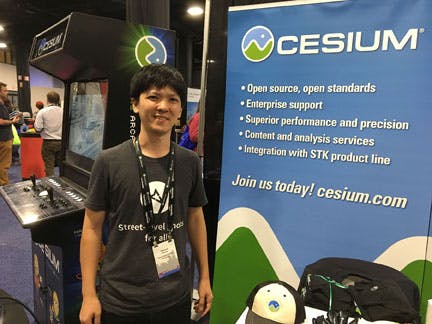
Kenya Temura of Dr. Hidenori Watanave’s lab showed the Hiroshima Archive,Wasurenai, and others, as well as the archive project he’s been working on.
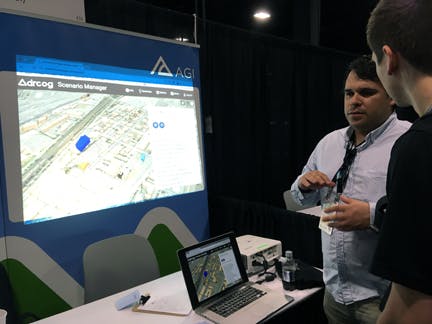
Justin Martinez showed DRCOG’s Scenario Manager for evaluating various development scenarios.
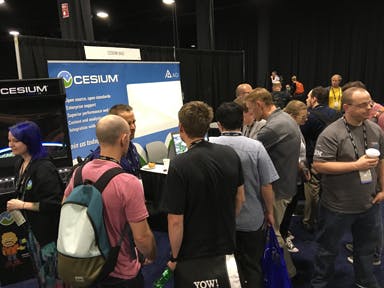
Matt Lammers of NASA demonstrated his Storm Viewer, which visualizes tropical storms and cyclones.
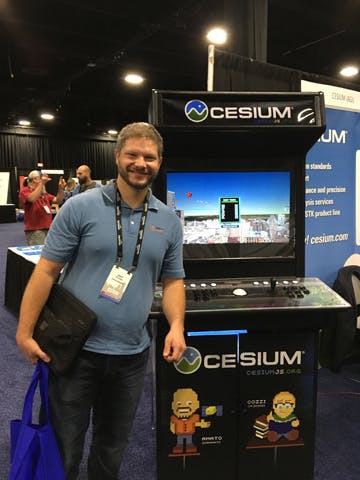
Jason Beverage of Pelican Mapping showed the particle system he’s contributed back to Cesium.
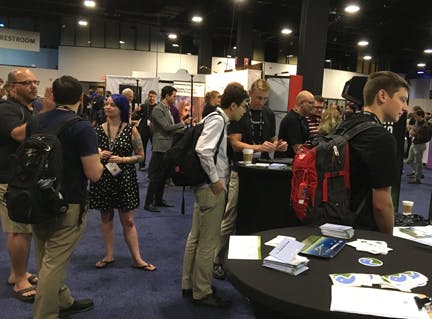
Zac Brown showed the really impressive work Novetta has done with Cesium.
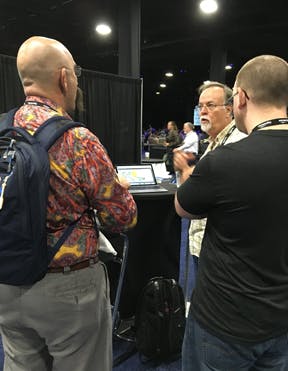
But the real buzz around the booth was 3D Tiles. People were eager to see their data, and many wanted to sign up to become 3D Tiles Pioneers.
Overall, attending FOSS4G was incredibly rewarding. It provided me with context to what we’re doing, and gave me a chance to meet people bringing creative analysis to really important problems, from improving vaccination rates in developing countries to reducing traffic accidents in major cities to bringing aid to small villages hit by extreme weather.
If you couldn’t make FOSS4G this year, put it on your calendar for next year. The international conference will be in Tanzania in August 2018, and of course there will be the regional meetings if you’re looking for something closer to home. FOSS4G NA will be in St Louis in April.
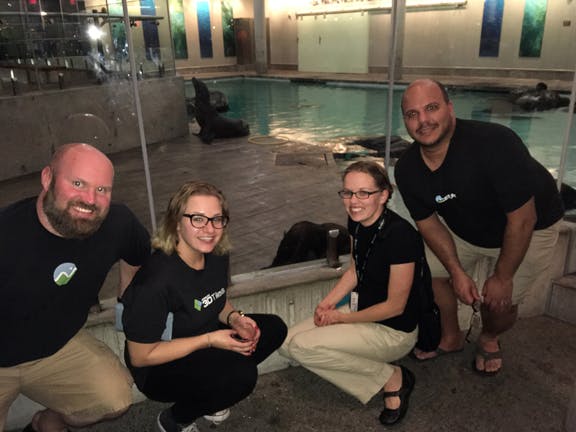
Tom, Gabby, me, and Matt with a seal-ium at the aquarium gala.